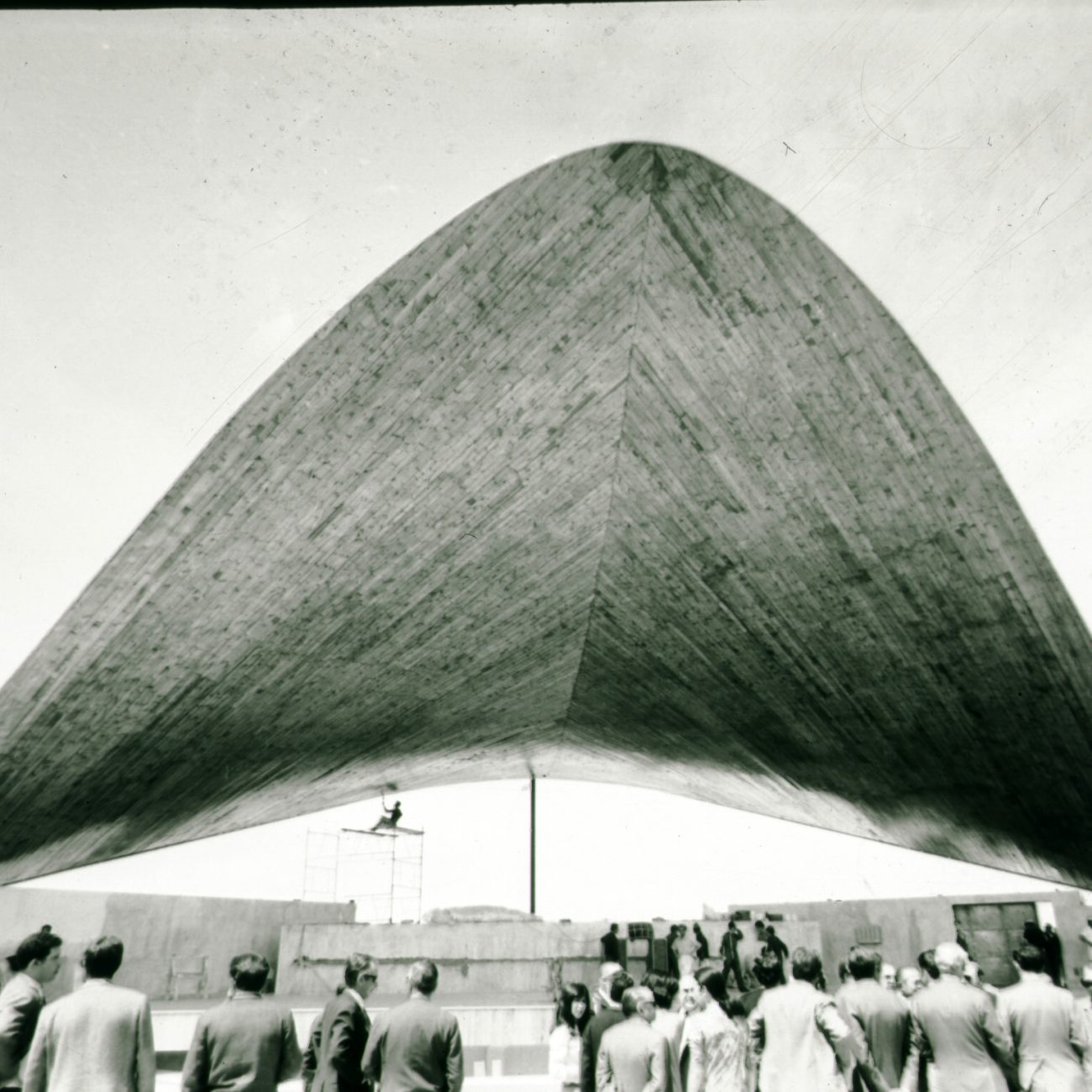After its construction in 1969, the auditorium-theatre of the amusement park of Madrid was capable of seating up to 5,000 people, being the biggest auditorium in Spain well into the 1980s. Due to its importance, this outdoor theatre has seen artists as renowned as Julio Iglesias and Massiel grace the stage. In fact, Triana gave their triple-platinum album concert at the venue in 1979. The auditorium’s totem was the concrete shell covering the stage. The shell consists of an impressive surface with the shape of a hyperbolic paraboloid (HP) resting on two lateral main abutments and a discreet third compensation point located at the back of the stage. The span between lateral abutments is 30m and the front edge on the stage is 10m high.
50 years after its construction, the group Parques Reunidos now requires a deep understanding of the structural condition of the shell. To this end, INES has initiated survey and analysis works comprising the following tasks:
Nine concrete cores from different roof locations and two abutment cores were taken out. The shell had a varying thickness between 65 and 70 mm. The HP’s excellent quality concrete had a cement content of over 450 kg/m³, with strength in compression, and a minimum value of 50 N/mm². The young’s modulus was calculated for two of the samples, with results of 32 and 28 kN/mm². The aggregate was below 12mm and had a 10% porosity, which is an indicator of good quality and compactness. The average density was 23 kN/m³ and the water absorption index was 4.5%. Consequently, the concrete type does not allow for the access of exterior humidity, oxygen, or aggressive agents such as chlorides and carbon dioxide. In fact, carbonation, chlorides or sulfates were not found. The plain and small diameter-reinforcement was not centered, but close to the inferior face with approximately 15mm concrete covers.
